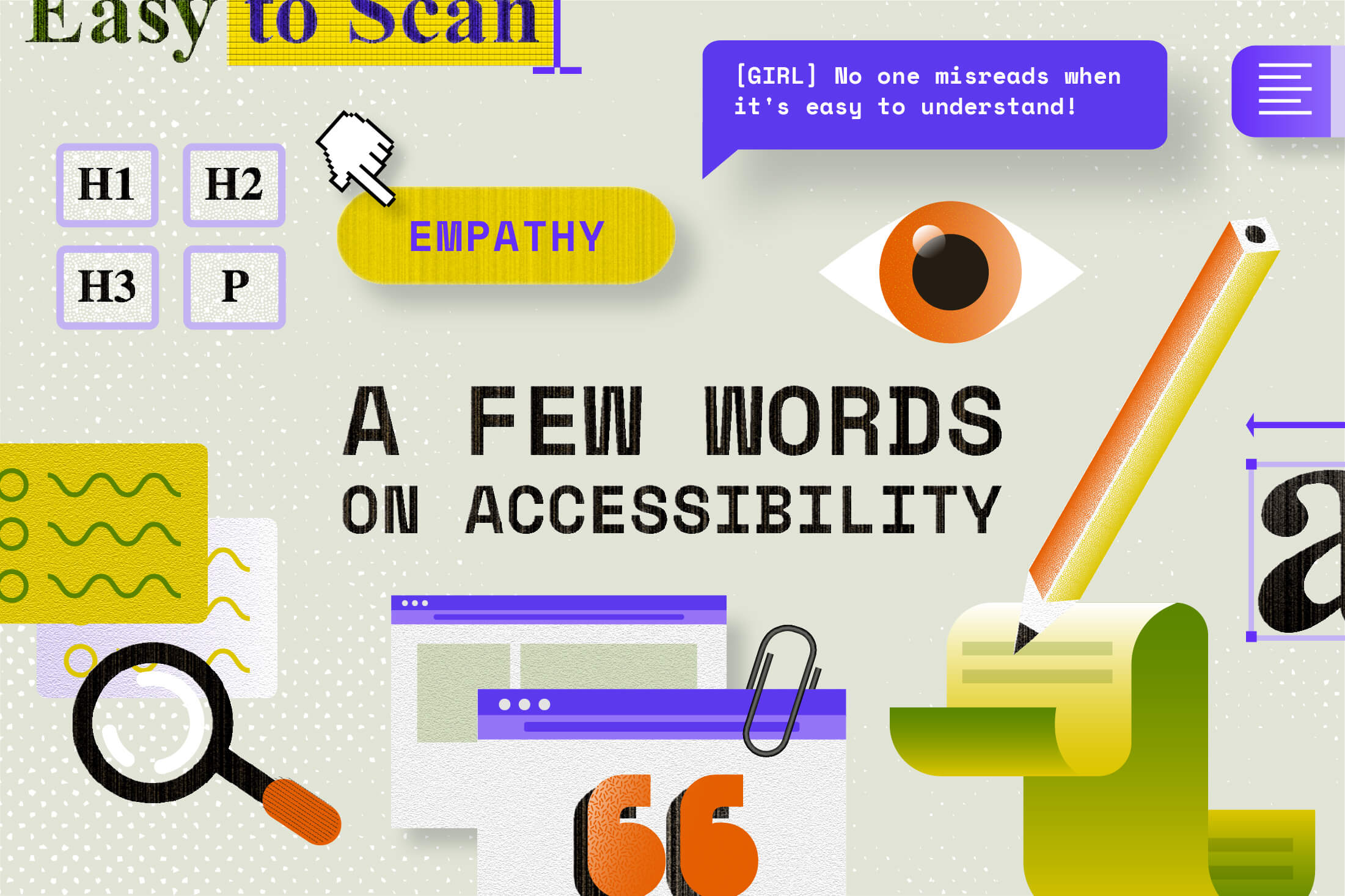
Contributors:
Matthew Reinertson
Jan 25, 2023
Writing accessibly can seem hard. Often, we’re so familiar with our own work that we forget about the reader entirely. This results in writing that’s confusing and ineffective.
To develop content that connects with more people, we have some tips to help you get out of your own head and into the reader’s.
Plain language is an increasingly popular communication strategy, and for good reason—it puts the reader first. Plain language helps your audience find what they need, understand what they find, and then use what they find to meet their needs.
Writing for your audience is the single most important plain language principle. That’s why we’re giving this rule its own paragraph. When you consider the language your audience uses, their knowledge of a given topic, and what they want to know, your content will be way more successful. Plus, you’ll establish credibility and become a source they’ll think of first when they need more info.
It may sound counterintuitive, but structure your content for people that aren’t all that interested in reading. These days, a lot of people scan web pages before they commit to reading them. This means your headings and subheadings are extremely valuable.
Also, bulleted lists are easy to read and naturally guide the reader’s eye. You can even include a summary or abstract at the top of the page to help readers understand what they’ll gain from your content.
The best way to validate your writing is by working with your target audience to test and refine your content. While invaluable, that process can be costly and time-consuming. Luckily, there are a ton of online tools you can use to measure the readability of your content. Each program offers a free, but limited version of its service. Any one of these tools (or a combination) is an easy way to check your writing as you work.
Remember, these tools are intended to help you meet your accessibility goals. Avoid writing just to satisfy the program; always keep your reader in mind.
Plain language isn’t just a tool for writers. It’s something your entire organization can put into action. Make plain language a part of your accessibility strategy to ensure your content is useful and usable for more people. In other words, plain language makes for a better user experience. No one has ever complained that something was too easy to understand!
Accessibility doesn’t begin or end with the written word. There’s so much you can do to make your website a more accessible experience. Be sure to read prior entries into our accessibility blog series, and check back later for even more useful tips.
Part 1: Compliance Led By Compassion
Part 2: New Website, Who Dis? How to Manage Your New Website While Maintaining Accessibility